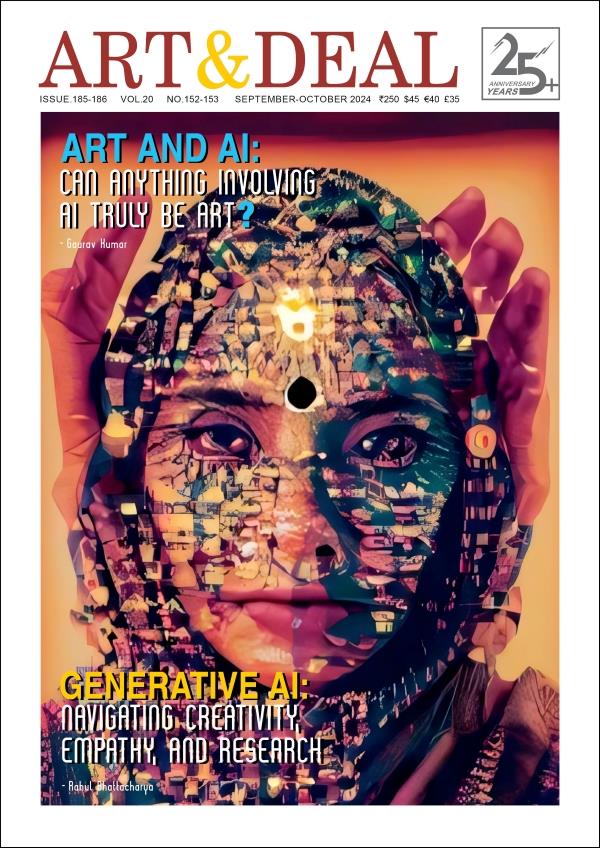THE ENCHANTED FOREST, THE LEGACY OF JANGARH SINGH SHYAM
INDIRA LAKSHMI PRASAD
Last October, Bikaner House in New Delhi hosted the exhibition of legendary modern Gond tribal artist Jangarh Singh Shyam. The exhibition was held following the release of the book ‘The Enchanted Forest’ by Aurogeeta Das and published by Roli Books, which focuses on the life, work and legacy of the artist. Work from the early days of Jangarh’s career was exhibited alongside the works he produced towards the end of his life, and the progression evident in the works is a visual journey of the development of an artist who emerged from humble and rooted beginnings, and was catapulted into the international art scene as a pioneer of the modern tribal art movement. In fact the term ‘Jangarh Kalam’ was coined after Jangarh Singh Shyam paved the way for others like him to bring their ancestral craft into relevance in the contemporary art scene.
The exhibition consisted of works from the private collection of Mitchell Abdul Karim Crites, which he collected over a period of 16 years. The book features the entire collection which consists of 123 works of art, and the exhibition featured a hand selected few. The relationship between Mitchell Crites and Jangarh Singh Shyam became more than just a professional one, and a close friendship blossomed between the two. At their time of meeting, Mitchell Crites had little idea about the tremendous talent that would become of Jangarh, or indeed of the tragic end which would eventually unfold. Art & Deal Magazine conversed face to face with Mitchell Crites regarding the exhibition and his friendship with the artist. He recalls: “For the 16 years before his tragic death in 2001, Jangarh would come to Delhi every few months and my wife and I would buy his work. We never realized he would become world famous, we just liked him and we liked his work. When he committed suicide in 2001 it came as such as shock. We had become good friends and I was deeply saddened. Every few years I would take the pictures from the box we stored them in. I would look at them and cry because I missed him so much.”
Crites met with Aurogeeta Das after years of searching for a potential author for a printed collection of the works, an author who knew enough about Gond art and the artist himself, and thus the conception of the book came about. Crites considers Jangarh Singh Shyam as one of the most important Adiavasi artists which India has ever produced, not only as a tribal artist, but as an Indian Contemporary artist in his own right.
Jangarh Singh Shyam was born into a Pardhan Gond family from Patangarh village in Madhya Pradesh. They were originally musicians who would pass down the story telling tradition of their tribe through music and song; they traditionally did not paint or draw. However Jangarh was a natural artist and continued to pursue and develop his artistic talent, and thereafter a unique representation of the tales of his ancestral song was expressed through the visual realm. Eventually he was discovered by the artist Jagdish Swaminathan at the age of 19, while creating mural art in his home village using earthen colors. Having recognized the young artist’s genius, Jagdish Swaminathan invited him to Bhopal to study and make work under his guidance. With Jagdish Swaminathan as mentor Jangargh Singh Shyam was free to creatively spread his wings and push the boundaries of what had previously defined Gond art, bringing about a radical evolution in the art style. Although having come from tribal roots, Jangarh Singh Shyam transcended the boundary of the Indigenous Art style and became one of India’s most important contemporary artists in his own right. 
One of the things about Jangarh’s work which stood out to Mitchell Crites was his numerous depictions of the tribal gods of his people; he was in fact the first of his community to make visual depictions of the gods. As Mitchell Crites recalls “He had a very mystical side to him, very connected to the earth and to the deities of his community. Some of the gods and goddesses as you can see are depicted as being covered in leaves and branches. I asked him ‘Jangarh, do they come from the forest?’ and he replied ‘They are the forest’”

